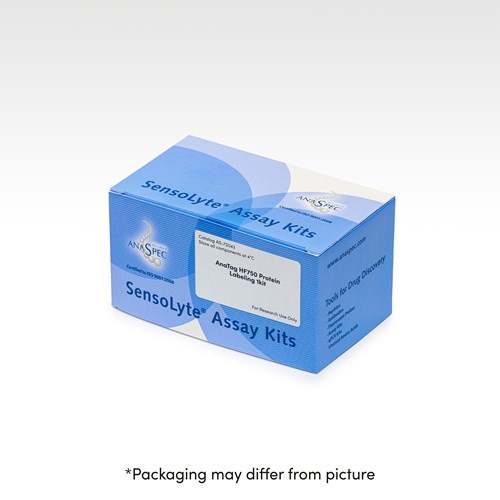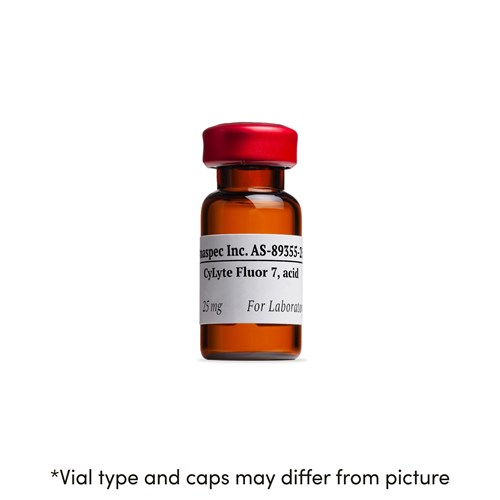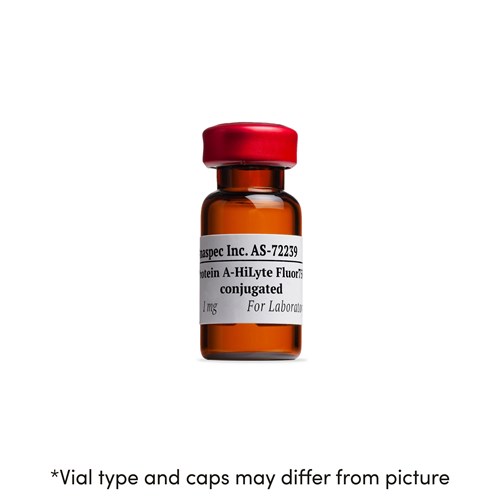HiLyte™ Fluor 750 C2 maleimide - 1 mg
- Cat.Number : AS-81269
- Manufacturer Ref. :
-
Availability :
In stock
- Shipping conditions : Ice delivery fees must be applied
Alternative choices
Spectrally similar to Cy®7 dye, HiLyte™Fluor 750 C2 maleimide is the longest-wavelength thiol-reactive HiLyte™Fluor dye currently available. Its fluorescence emission maximum at 778 nm is well separated from commonly used far-red fluorophores such as HiLyte™Fluor 647, HiLyte™Fluor 680 or allophycocyanin (APC), facilitating multicolor analysis. With a peak excitation at ~754 nm, conjugates of HiLyte™Fluor 750 dyes are well excited by a xenon-arc lamp or dye-pumped lasers operating in the 720–750 nm range. Extinction Coefficient (M-1cm-1): 275,000 Fluorescence quantum yield: 0.12 Fluorescence Life Time (ns): 0.7
Specifications
| Chemistry | |
| Molecular Mass/ Weight |
|
|---|---|
| Properties | |
| Absorbance (nm) |
|
| Emission (nm) |
|
| Color | |
| Quantity & Purity | |
| Purity |
|
| Storage & stability | |
| Form |
|
| Resuspension condition |
|
| Storage Conditions |
|
| Activity | |
| Application | |
| Detection Method | |
| Research Area | |
| Sub-category Research Area | |
| Usage |
|
| Codes | |
| Code Nacres |
|
Downloads
You may also be interested in the following product(s)



Citations
Targeting acidity in pancreatic adenocarcinoma: multispectral optoacoustic tomography detects pH-low insertion peptide probes In Vivo
Clin Cancer Res. . 2015 Oct 15 ; 21(20) 4576 | DOI : 10.1158/1078-0432.CCR-15-0314.
- W.C. Kimbrough
- et al
